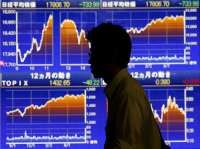CHINA - SHANGHAI. China's central bank cut the interest rate on its one-year medium-term lending facility (MLF) loans on Tuesday for the first time since early 2016, as policymakers work to prop up a slowing economy hit by weaker demand at home and abroad.
Analysts said the cut, while modest, may be a sign the central bank is turning more proactive and is looking to ease investor worries that higher inflation will prevent it from delivering fresh stimulus measures.
Chinese government bonds have sold off in recent weeks on concerns that authorities may be moving to a more cautious policy stance, despite a sharper-than-expected economic slowdown.
The People's Bank of China (PBOC) said it was lowering the rate on its one-year medium-term lending facility (MLF) loans to financial institutions by 5 basis points to 3.25% from 3.30% previously.
The move could pave the way for a reduction in China's new benchmark Loan Prime Rate (LPR) in a few weeks. It is linked to the MLF rate and is published on the 20th of every month.
Hao Zhou, senior emerging markets economist at Commerzbank in Singapore, said the cut, while "really tiny", sends a message that the PBOC does not want the market to doubt its will to support growth.
"They tried to manoeuvre in a limited space ... It does not change the overall picture that aggressive easing is not on the table. On the micro level there's still some targeted support from policymakers," he said.
The PBOC said it had lent 400 billion yuan ($56.92 billion) to financial institutions through the liquidity tool, slightly less than a batch of MLF loans worth 403.5 billion yuan due to mature on Tuesday.
ING economists said in a note Tuesday's move would signal to the markets that a pause in monetary easing since September was over.
Bonds had sold off on rising expectations that the U.S. and China will reach a trade deal and on fears the central bank will be held back by quickening consumer inflation, which has jumped to near 6-year highs largely due to rising pork prices.
The yield on benchmark 10-year Chinese government bonds has risen about 30 basis points since early September.
Julian Evans-Pritchard, senior China economist at Capital Economics, noted that the rate cut was the first reduction in a PBOC lending facility rate in more than three years.
"It will lower funding costs for banks and, as a result, banks should be more willing to lower lending rates."
But he said a five-basis-point cut won't be enough to drive a turnaround in credit growth, which has started slowing again recently.
"We expect another 70 bps of reductions in the MLF rate by the middle of next year," he said in a note to clients.
Read Also: Oil ticks up slightly as tentative U.S.-China hopes lend support
POLICY DILEMMA
China's response to the current slowdown has been more restrained than in the past, when it slashed rates aggressively and encouraged a lending spree that created a mountain of debt.
So far, Beijing has largely opted for higher infrastructure spending and tax cuts to support economic activity, while acknowledging it will take some time for such support to filter through.
The PBOC has also cut banks' reserve requirements seven times since early 2018 to free up more funds to lend, with another such move widely expected by year-end.
However, investor uncertainty over the PBOC's policy plans has heightened in recent weeks, causing repo rates to rise and bonds to be sold.
Following the MLF cut on Tuesday afternoon, Chinese 10-year Treasury futures for December delivery, the most-traded contract, were 0.28% higher.
Commerzbank's Zhou said the recent gains in the yuan may have strengthened the PBOC's hand and given it more confidence to move now.
The Chinese currency has risen to 2-1/2 month highs against the dollar this week amid signs that Washington and Beijing may be inching toward a deal that could de-escalate their protracted trade war.
At the same time, a slew of downbeat economic data suggest more stimulus is needed soon.
Third-quarter economic growth slowed more than expected to 6.0% from a year earlier, the bottom of the government's target range of 6-6.5% for the full year. Nomura believes it will fall to 5.8% in the current quarter, and slow further next year.
However, the PBOC surprised markets by not issuing targeted medium-term loans in October.
It also unexpectedly kept its new lending benchmark rate unchanged at the monthly fixing in October for the first time since its debut. It had trimmed the rate in August and September.
Read Also: Southeast Asian leaders meet under US-China trade war cloud
Some analysts believe authorities are conserving their policy ammunition while waiting to see the outcome of the latest trade talks.
But a partial trade deal may only relieve some of the pressure on the world's second-largest economy, though it could bolster business confidence.
Global demand is expected to cool further next year, keeping up pressure on exporters, and surveys show prolonged weakness in manufacturing is spilling over into China's key services sector, which accounts for over half of the economy.
/2019/06/11/191873620p.jpg)









